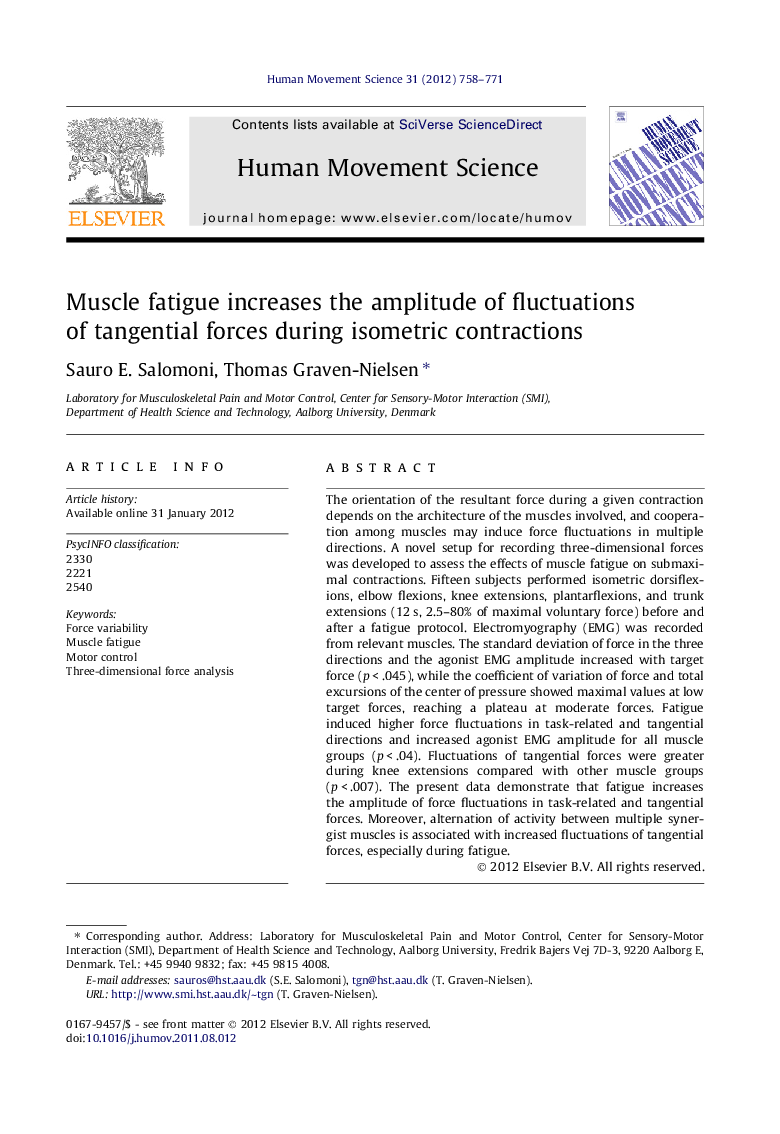| Article ID | Journal | Published Year | Pages | File Type |
|---|---|---|---|---|
| 928462 | Human Movement Science | 2012 | 14 Pages |
The orientation of the resultant force during a given contraction depends on the architecture of the muscles involved, and cooperation among muscles may induce force fluctuations in multiple directions. A novel setup for recording three-dimensional forces was developed to assess the effects of muscle fatigue on submaximal contractions. Fifteen subjects performed isometric dorsiflexions, elbow flexions, knee extensions, plantarflexions, and trunk extensions (12 s, 2.5–80% of maximal voluntary force) before and after a fatigue protocol. Electromyography (EMG) was recorded from relevant muscles. The standard deviation of force in the three directions and the agonist EMG amplitude increased with target force (p < .045), while the coefficient of variation of force and total excursions of the center of pressure showed maximal values at low target forces, reaching a plateau at moderate forces. Fatigue induced higher force fluctuations in task-related and tangential directions and increased agonist EMG amplitude for all muscle groups (p < .04). Fluctuations of tangential forces were greater during knee extensions compared with other muscle groups (p < .007). The present data demonstrate that fatigue increases the amplitude of force fluctuations in task-related and tangential forces. Moreover, alternation of activity between multiple synergist muscles is associated with increased fluctuations of tangential forces, especially during fatigue.
